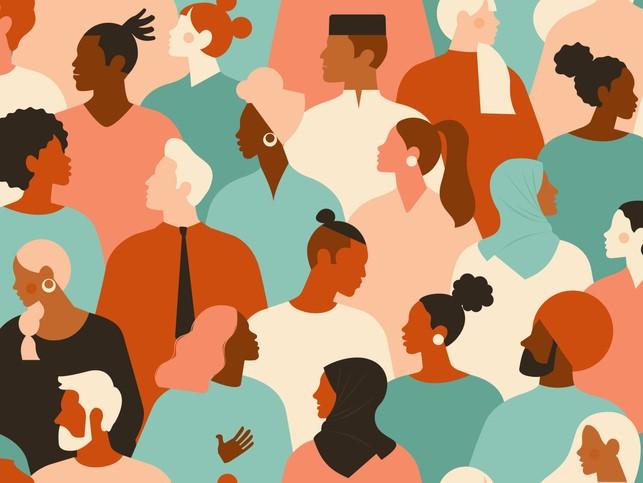
Tackling bias and microaggressions in higher education
Higher education (HE) institutions are crucial engines of societal progress, and their commitment to diversity is fundamental to their mission. Attracting and retaining racial and ethnic minority staff, academics and leaders is essential for fostering inclusive environments that reflect the diverse world we live in. Here, I present practical advice on ensuring fair recruitment and preventing microaggressions.
Ensuring fair and non-biased recruitment processes
To attract diverse talent, HE institutions must begin with equitable recruitment practices. This involves revising job descriptions to remove biased language, such as terms like “native English speaker” in favour of “proficient in English”, which does not alienate non-native speakers. Additionally, replacing phrases such as “cultural fit” with “cultural contribution” encourages valuing diverse perspectives rather than conforming to existing norms.
Using inclusive language and specifying a commitment to diversity and inclusion in job descriptions can also signal an institution’s openness to diverse candidates. Ensuring that selection criteria focus on skills and competencies rather than arbitrary qualifications, such as requiring specific prestigious university degrees, helps level the playing field.
Moreover, diversifying hiring committees ensures multiple perspectives are considered, minimising the risk of homogeneity in decision-making and creating a more welcoming environment for ethnic minority staff.
Training programmes on implicit bias are essential for all members involved in the recruitment process. These sessions should highlight the importance of diversity and provide tools for recognising and mitigating biases, such as using structured interviews, implementing standardised evaluation criteria and employing software tools like Textio for unbiased language in job descriptions. Additionally, utilising bias-checking tools like Blendoor can help identify and address biases in the recruitment process.
Blind recruitment, where identifying details such as names and photos are omitted, can reduce unconscious bias. Institutions should also commit to transparency by publicly sharing their diversity goals and the steps they are taking to achieve them.
Identifying and addressing microaggressions
Microaggressions are subtle, often unintentional, discriminatory comments or behaviours that can make minority staff feel marginalised or undervalued. These can manifest in various forms, including verbal, behavioural and environmental. Verbal microaggressions might include comments that imply surprise at someone’s linguistic ability based on their ethnicity, or questions suggesting that the person doesn’t belong “here”.
Behavioural microaggressions may involve assuming a person of colour is a junior staff member rather than a professor or scholar, revealing biased assumptions about their professional status, or avoiding eye contact and interrupting someone, signalling a lack of respect. Another example is seen in university-wide strategy group meetings or meetings where most attendees are from the majority ethnic group, and one person is from a minority ethnic group. In such situations, microaggressions can occur when several chairs are left vacant next to the ethnic minority staff member, or chairs are pulled away to avoid sitting next to them, creating a sense of exclusion. Additionally, an institutional focus on “nurturing home-grown talent” can unintentionally marginalise minority staff by implying a preference for those perceived as more familiar or fitting a particular cultural norm.
Environmental microaggressions occur when institutional practices, such as a lack of diverse representation in promotional materials or inadequate accommodations for cultural or religious practices, subtly convey that diversity is not valued.
For those who do not directly experience microaggressions, identifying them can be challenging owing to their subtle nature. One effective approach is self-education, which involves learning about common microaggressions and understanding their impact. Engaging with books, workshops and online resources, as well as listening to the experiences of minority groups, can provide valuable insights. Additionally, observing and reflecting on everyday interactions is crucial. This means being mindful of your own reactions and assumptions and considering whether they are based on stereotypes or biases. Observing the dynamics in meetings and conversations (particularly who is interrupted, ignored or not addressed respectfully) can also reveal patterns of microaggressions. Lastly, seeking feedback from colleagues, especially those from minority backgrounds, and creating safe spaces for open dialogue can further enhance understanding and awareness.
- Resources for HE professionals on equity, diversity and inclusion
- Improving the digital experience for Black international students, part one: before and on arrival
- How to improve diversity and inclusion for Black students and staff
Addressing microaggressions
Addressing microaggressions requires both individual and institutional efforts. On an individual level, it is essential to acknowledge and validate the experiences of those who face microaggressions. If someone shares their experience, responding with understanding rather than defensiveness is key to validating their feelings. Self-reflection is another important step; being open to recognising and changing one's own behaviour can lead to personal growth. When witnessing microaggressions, it is important to stand up against them, either by speaking up in the moment or by supporting the affected person afterwards.
HE institutions must actively work to prevent such occurrences. Regular training sessions on cultural competency and sensitivity can help staff recognise and avoid microaggressions. Creating an open dialogue about the impact of these behaviours and encouraging staff to speak up when they witness them is also crucial.
Implementing clear policies and procedures for reporting and addressing microaggressions is vital. Anonymous reporting mechanisms and assurance of non-retaliation are necessary to make staff feel safe when coming forward. Additionally, leadership must model inclusive behaviour and take immediate action when issues are reported.
Promoting diversity in hiring, representation and leadership helps to create an inclusive environment where all staff members feel valued and respected. By taking these steps, both individuals and institutions can contribute to a more inclusive and supportive work environment in higher education.
Attracting and retaining racial and ethnic minority staff in higher education requires a multifaceted approach that addresses recruitment, retention and empowerment. By ensuring fair and non-biased recruitment processes and preventing microaggressions, HE institutions can build inclusive environments that reflect and celebrate diversity. These efforts not only benefit minority staff but enrich the entire academic community, driving innovation and excellence in higher education.
Pallavi Banerjee is a senior lecturer in the School of Education at the University of Exeter.
If you would like advice and insight from academics and university staff delivered direct to your inbox each week, sign up for the Campus newsletter.
Additional Links
For more resources on this topic, see our spotlight on how universities can boost staff diversity.




